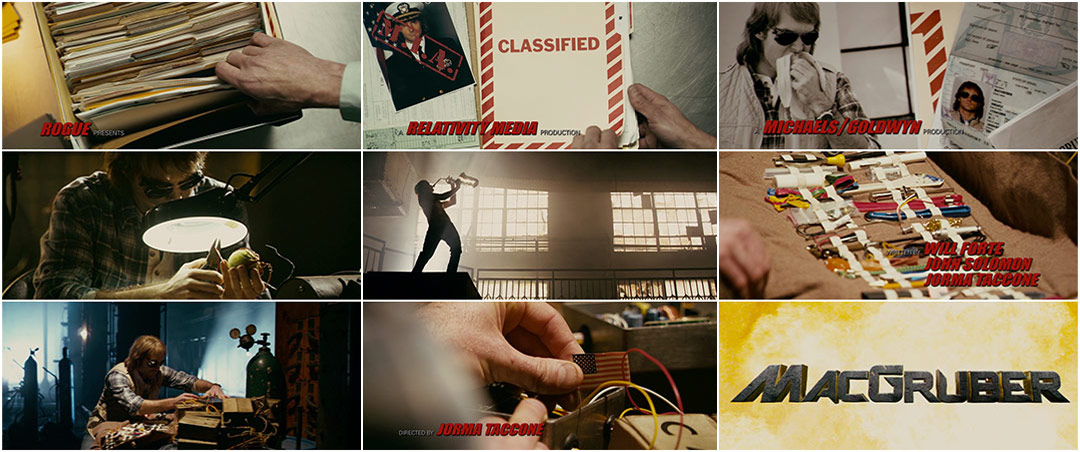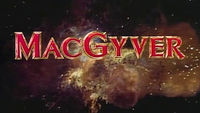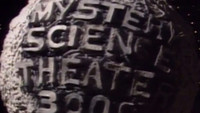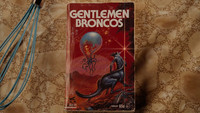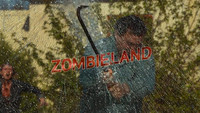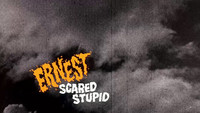Myth. Legend. Soldier. Lover. Some call him the Demolition Dude, others, the Eliminator. The Glitter Man. The Second-Last Action Hero. To his friends, he’s simply MacGruber – a throat-ripping, girl-stealing, ghost-humping, toilet-wrecking sonofagun with a penchant for bomb disposal and getting the job done – no matter the cost.
A discussion with MacGruber Director JORMA TACCONE and Main Title Designer RYAN MCNEELY of Visual Creatures.
Jorma! Tell us a little bit about yourself.
JT: My name is Jorma Taccone, I'm from Berkeley, California. When I was six years old... [laughs]
I was a writer on Saturday Night Live. I am also part of a comedy group called The Lonely Island, which includes my friends Andy Samberg and Akiva Schaffer. I've known them since junior high and high school and we've been making short films since about 2002 which, oh my god, that's so much time.
We basically formed this comedy group after we all graduated from college. SNL hired us in 2005 and as soon as we got there we realized that we weren't the greatest at writing live sketches, so we started making films the way we always had – writing, shooting, editing it ourselves – only now we had the SNL budget.
The biggest shorts we did for SNL were “Dick in a Box,” “Lazy Sunday,” “Jizz in my Pants,” and “I'm on a Boat.” So... we're three classy, classy gentlemen.
What kind of opportunities have you had because of the success of your Lonely Island work?

Still from the “Dick in a Box” short featuring Andy Samberg and Justin Timberlake
JT: When we first got to SNL, we were making stuff almost identically to the way we had made it by ourselves. We would just borrow a camera, go out and film something, edit it and bring it to the show. We were just hoping to get it on, so we were shocked when we actually did. To even get something to dress rehearsal was a big deal but then to get it on air was even more impressive.
It was really right around the time we did our fourth or fifth show that we did the “Lazy Sunday” rap, which is about Andy Samberg and Chris Parnell going to see The Chronicles of Narnia, and it's sort of hardcore rap about the very mundane subject of going to see a movie and how they get there and what snacks to bring. It became this big thing online. At the time, I had never heard of YouTube, but we kind of rode that wave of people who were just finding out about it. They were like intrinsically linked. That, and a couple other videos were like the first thing a lot of people saw on YouTube.
So, how did MacGruber happen? Where did that character come from?
JT: Honestly, MacGruber was one of the dumbest pitches I ever had at SNL. I had two ideas that week: one of them was for the host to play MacGyver's step-brother MacGruber, a guy who defuses bombs using only pieces of shit and pubic hair. And every time he asks one of his assistants to hand him an item, nobody wants to touch anything ’cause it's so disgusting. Honestly, it got the biggest growl that I've heard since I’d been there! They were like, "Ah, get out! Ugh, it's disgusting!" And no one laughed. The second idea was for a commercial parody for a new kind of chunky mayonnaise.
Wow. [laughs]
JT: And everyone was like, "Oh, God." I mean, both of them were just disgusting and I got no laughs! But I really liked the idea of the character... I got excited about it and I kept pitching it to Will [Forte] and he really didn't like it. Finally he acquiesced and said he would at least write it with me. So, me and John Solomon started writing sketches.
And how did you proceed?
JT: We started making sketches and then we kind of fell in love with this character.
MacGruber 2009 Super Bowl Pepsi commercials
Later, we made a Pepsi commercial... We heard it was an opportunity and Lorne wanted us to do it. We always wanted to do a MacGruber where he sells out because we liked that he was a shallow individual who would do anything for money, so we made these Pepsi commercials and it aired during one of the most watched Super Bowls ever! We got the opportunity for the MacGruber movie right there. They told us that a couple people were interested. I think we had the same reaction a lot of people did: “How are you gonna make a one-minute sketch where a guy blows up over and over into a feature length movie?!” So we wrote a script.
It was really liberating. We liked his character so much that we were like, “Fuck, if they are seriously talking about doing this, let’s just do whatever we want!” We loved late ’80s/early ’90s action movies so we were excited to do our ode to that – not even a spoof. To me, we were really trying to recreate our vision of that era and put this character we loved that was this piece of shit, this fuck up, into situations he shouldn't be in.
Aside from MacGyver, what were some of your other inspirations for the character?
JT: In terms of the movies we’re making direct reference to… I mean, it’s Commando, it’s Road House with all the little throat rips, it’s Riggs from Lethal Weapon. That character is almost our model for MacGruber. I mean, Riggs is suicidal, he is just off the handle, a bit of an alcoholic – all of that is entwined in MacGruber. We are so extreme with it, though – our character is possibly a closeted homosexual and also completely homophobic. He’s sexist. Everything you can imagine that you don't want in a character – we’re trying to go for that!
Commando (1985) opening titles
The title sequence feels like a distillation of those films in many ways. What were some of your influences for the opening?
JT: For the MacGruber titles, I was actually inspired by the Blade II title sequence; it was all these slow, tracking shots around objects and stuff in the foreground.
So, how did you proceed to making the titles? This is where you come in, right, Ryan?
RM: Right. We received a call from Jorma about four months prior to us actually creating the first images for the film. He was working with an incredibly talented composer, Matthew “Cornbread” Compton, a friend with whom we had worked in the past.
JT: He is an amazingly talented musician and as soon as he heard that we were doing this movie, he started sending me tracks. When we started talking about movies that we loved growing up – his favorite movie was Robocop and mine was Die Hard – it just made sense.
How did you decide to do an opening title sequence?
RM: They had screened an early cut of the film in New York and Jorma was like, “You know what this film is missing?... a title sequence” and Cornbread recommended us for the job. And that’s how things get done in Hollywood!
What were some of your original concepts?
RM: One of the things that was important was to update the style of the design from the skit on SNL. Jorma’s direction was to make it feel like a big Hollywood studio had taken the franchise and said, “We are gonna fucking blow people’s minds.” He wanted it to feel like they had said this in 1990. We focused on fonts and gravitated to the more standard ’90s look of the Die Hard and Lethal Weapon movies. The time when simply putting text in italics made it feel like a big action movie.

Main title workshop concept typography tests
JT: We were like, “This movie isn't complete without that kind of ’80s-style title sequence.”
RM: But everything was hypothetical because we didn’t know if the studio would even give us the money to do something. We bounced ideas around daily; we weren’t sure if we wanted to do something graphic or live action. Ideas ranged from building text out of paper clips and chewing gum in 3D, to a 360º shot of MacGruber under a stage, disarming a bomb as a choir sang the theme song above him until… well… an explosion, of course. We finally ended up honing it down to three ideas. We went into the boarding phase on those concepts.
The first set of boards was a modern twist on classic ’80s and ’90s TV sitcom opening titles, where the characters go about their business until the camera interrupts them for a cheesy pose just as an explosion goes off. The second was a more graphic approach that took us into the mind of MacGruber, giving us a visual representation of the ridiculous logic that goes on in his head with the titles incorporated.

Main title pitch ideas featuring the "Explosion" and "Brain Fart" concepts
The final idea, which we used, was MacGruber in his workshop. He would be tinkering with makeshift bombs, practicing tae kwon do, tanning, and playing the sax while 3D titles existed as objects in his workshop. Originally, the film’s release date was in March, so we were hustling in January to have at least a few weeks to hammer it out.
JT: It was much longer when we had all the credits in it, but the beginning of the movie wasn't all that funny – basically it's a crime and Val Kilmer shooting people in the head – so we needed to get to something funny and also clue-in anyone new to the character, so they'd know what he's about – that he's a bomb defuser.
RM: As soon as we started tracking titles into the first shots, we found that because of union and guild rules the bulk of the title sequence would have to be moved to the end of the film. This meant that we would have to lose the tracked-in 3D titles, but we still had a great workshop scene to open the film.
3D type examples for opening titles
So how did everything come together? How did you adjust to the bulk of the titles being at the end of the film?
RM: Because the bulk of the titles were moved to the end, and the film ends with a wedding, Jorma decided to use the wedding reception as the setting for the closing sequence. Our initial plan was to use real wedding photographers to shoot a full-blown outdoor wedding reception, with caterers, guests, coroners, etc and animate it by flipping through pages of their wedding album. We did a lot of exploration for the album itself. One idea was a wedding album that MacGruber had made himself, there was another version that was a DVD with super shitty graphics. We went deep into what would essentially amount to a slide show.

Initial pitch styles for main-on-end
JT: That was one of the things that I would have done differently, actually. We knew that we wanted it to be stills. We would have had a lot more options if we'd had two photographers actually take pictures of the wedding happening. We always meant for it to end with, like, “Celebrate” by Kool and the Gang as you see pictures of like Von Cunth in a body bag. It was meant to be horrific. There was this Michael Bolton song, “Love is a Wonderful Thing,” too.
But before anybody was even hired, before we even knew that we were going to be able to do the title sequence, me, Ryan, and my friend Jessa went out to this park in LA and took background plates, not knowing what it was going to become. We took hundreds of photographs and then put it all together. Making the film was actually a little more down-home than you’d expect.

Wedding photo main-on-end design pitches
How much time did you spend shooting?
JT: We only had three days of reshoots in which we shot the opening credits and the closing credits. We meant to shoot it all live action, but when we were there we had torrential rains in L.A., which never happens. So we shot it all green screen and then used the previously shot back-plates to sort of comp everything in. We had those two days, so we had a big wedding over green screen and all these little pickups.
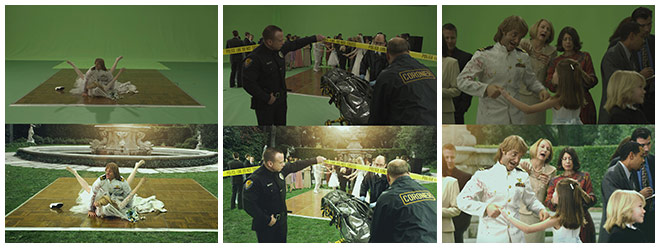
Live-action shoot before and after comparisons
RM: Brandon Trost shot the scenes on two RED One cameras to be able to get the most out of the only day we had. He also got in front of the camera for a minute to play Big Show’s date to the wedding. We would then pull stills from the 4K live action footage to piece together our sequence. The RAW R3D files gave us a lot of wiggle room to reframe and get the framing we needed to fit the background plates.
JT: Oh, and one thing that you should know about the opening credits, which you can probably tell, is that obviously we couldn't go to Russia and shoot a Red Square sort of thing. We were trying to make it look as good as possible, but there are like five stock footage shots in the movie that you're like, “Yeah, okay, that's not a helicopter shot.”
MacGruber end title sequence
Whose idea was the tribute to Real Genius?
JT: Oh, you know what? That’s all Lorne Michaels! I will admit it. I didn’t even wanna shoot that and I was completely, completely wrong. I was so excited about Will’s speech that I didn’t want to break it up at all but it doesn’t get interrupted because of the way we edited it. But that was [Lorne’s] one thing on the re-shoot days. He was like, “We have to get Val Kilmer…” I think he wanted it to be a whole scene, actually. But we had to get Val Kilmer in it. I picked out the Real Genius haircut.

Val Kilmer on the set of Real Genius (top) and homage in MacGruber
It turned out to be one of the funniest acts in the movie – this overjoyed Val Kilmer who has been put upon and a murderer has stolen his girl and aborted his baby.
It’s so much fun to see Kilmer as that character but it also helps break up the horribly disturbing story that Will is telling. You realize, like you said, he’s even more of a complete shit.
JT: I think it’s really easy for me to wanna go for exactly what you just said. Of not allowing the audience to feel anything but discomfort. Like, no, you have to listen to this guy tell this horrible story and be shocked at how awful he is. I think it’s one of the biggest things I learned at SNL: providing more of a laugh point for people so they can accept what’s going on. In retrospect, it was a really brilliant suggestion on Lorne Michaels’ part.
This was your first feature film – what did you learn from the experience?
JT: Gosh. A tremendous amount. Have more days to shoot! I mean, we spent as much time as we could, but it was all so fast. And the problems that you notice on your shooting scripts don’t go away. If there's a problem in the plot or a problem with any of the logic of the characters or the jokes, they are still going to be there at the end when you're editing.
Are you happy with how the film turned out?
JT: Well, we wrote the movie in four to five weeks. We had six weeks of pre-production, 28 days of shooting. We were going at breakneck speed. So I wouldn't say that it’s a perfect film at all, but for what we set out to do and what we got, I'm really, really proud of it. It's our love letter to the films that we loved growing up in the late ’80s and early ’90s.
RM: Despite all of the obstacles and the short timeframe, we couldn’t be happier with the way it turned out. You really couldn’t ask for a better director than Jorma to work with. We had a blast.
JT: [laughs] One of the nicest comments I got was from a guy at Universal in a meeting that said, "Don’t take this the wrong way, but this film is so much better than it should be." I was like thank you, that is what we were going for!
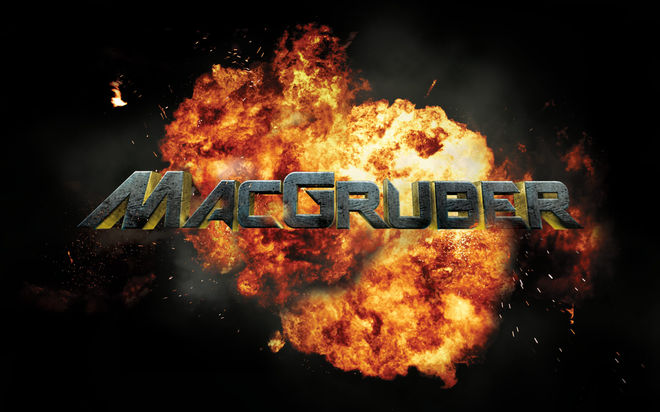
End title card

